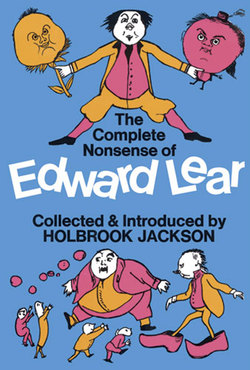Читать книгу The Complete Nonsense of Edward Lear - Edward Lear - Страница 8
На сайте Литреса книга снята с продажи.
2
ОглавлениеThere was something preposterous about Edward Lear, amiably preposterous. He might have stepped out of one of his own nonsense books, and he seemed to know it and to make the most of it. He pokes fun at himself even when he is serious, and his letters dance with caricatures of his own plump figure, high-domed brow, and bushy whiskers. By profession he was a painter of birds and landscapes, by habit a wanderer, a humorist and a grumbler. He was, in fact, an artist, and if he had not been forced to fritter away his life in earning a living, he might have been a greater artist in his chosen profession of topographical illustrator. Instead of that he became famous for his side-lines—the sketches in water-colour incidental to his finished paintings, as well as to the nonsense rhymes and pictures which were his quaint lines of communication with his friends and their children, but which were themselves developed from an involuntary need for whimsical expression. Some inner conflict, aggravated by indifferent health and insufficient wealth drove him to cut capers with words and images and ideas. And so, by accident he becomes the laureate of nonsense, objectivising for his own relief and, as it happens, for our delight, that wilfulness which ever kept him a child in a world that was already in its second childhood.
He was born at Highgate on the 12th May 1812, and died in 1888 at San Remo, on the Italian Riviera where he had lived for eighteen years with his Albanian servant, Georgio Kokali, who had served him for nearly thirty years, and his famous cat, Foss, who had pre-deceased him by a few months at the advanced age of seventeen years.
Lear was the youngest of a family of twenty-one children, most of whom he outlived. Of the twenty-one, thirteen were girls and Edward was brought up by Ann, the eldest, who continued to mother him until her death when he was nearly fifty. His father was a stockbroker of Danish descent who speculated his way from affluence on Highgate Hill to poverty and the King’s Bench Prison. His mother came from Durham, and was presumably English. Edward also attributed a liking for Irish character to the influence of a ‘Gt.Gt.Gt.Gt.-Gt. Gt. grandfather’ of Irish blood. So, remembering Hans Andersen, who was a Dane, and the supposed humour of Ireland, one may argue that Danish and Irish blood is a good mixture for the production of that kind of humorous fantasy which he called nonsense. But whatever his descent, Edward Lear possessed many of the characteristics of the more eccentric of wandering Englishmen, and neither he nor his peculiar brand of humour could have been produced anywhere but in England, the birthplace of the Ingoldsby Legends, the Bab Ballads, and Alice in Wonderland.
He never married; there is no evidence that he was attracted to women except as friends, and his works, literary and graphic, are as sexless as the artistic efforts of a child. He occasionally puzzles over the problem of marriage as he puzzles over so many things which are not quite obvious, but when he is in his forty-first year he rebukes any impulse to that end by reflecting that if he married he would ‘paint less and less well’, and further, this most determined and illustrious entertainer of children puts it on record that the thought of ‘annual infants’ of his own drives him ‘wild’. In the same letter he argues as many bachelors, scared at the idea of a lonely old age, have done before him: ‘If I attain to 65, and have an “establishment” with lots of spoons, etc., to offer—I may chain myself:—but surely not before. And alas! and seriously—when I look around my acquaintances—and few men have more, or know more intimately, do I see a majority of happy pairs? No, I don’t. Single—I may have few pleasures—but married—many risks and miseries are semi-certainly in waiting—nor till the plot is played out can it be said that evils are not at hand.’ Fear of matrimony is evidently a recurring whimsy, whose continued presence is revealed ten years later when he is living in Corfu, where he is attracted by a native girl and wishes, playfully, he were ‘married to a clever good nice fat little Greek girl—and had 25 olive trees, some goats and a house’. ‘But’, he adds, ‘the above girl, happily for herself, likes somebody else,’ and there the matter ended and Edward Lear makes the pilgrimage of life alone, though not without friends, and the friendship of faithful servants, and the seventeen year long companionship of ‘Old Foss’, the cat, amusingly immortalised in so many of his drawings.
Although his education, according to modern standards, was inadequate, and he was earning a living as a commercial artist at fifteen, he managed to accumulate considerable culture. He could read or talk in at least half-a-dozen languages, including Greek both ancient and modern; and in addition to his skill as a painter of landscapes and his technical exactitude as an illustrator of birds, he composed and sang songs, wrote light verses, kept long diaries, wrote innumerable letters, and gave a new idiom to numorous drawing. He must also have had a gift for communicating his skill for at one time he was the art-master of Queen Victoria.
